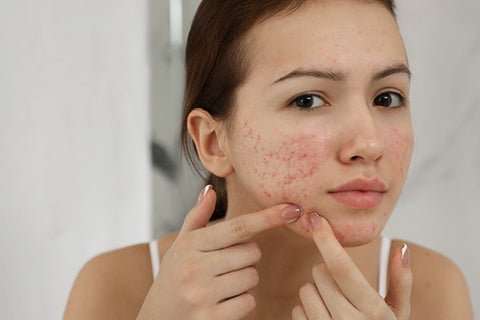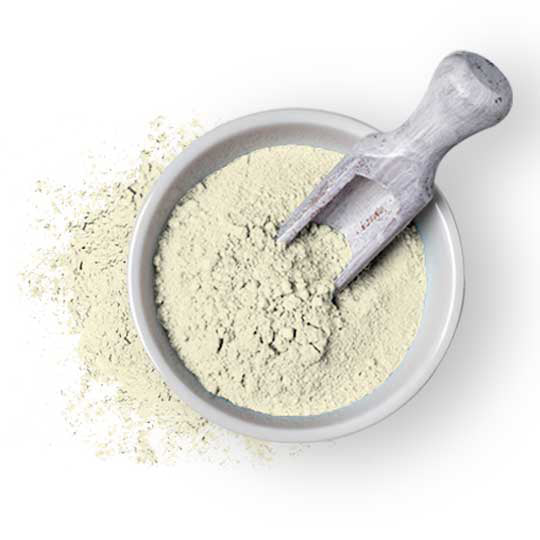Both Kaolin and Bentonite are mineral-rich clays that can be used for hair care, teeth cleaning, skincare, and other purposes.

However, there are subtle differences between them that need to be understood first. In this article, we will be studying the differences between Kaolin clay vs Bentonite clay along with the differences in their uses and properties.
What is Kaolin Clay?
Kaolin Clay is a white colored clay that occurs in nature due to weathering of aluminosilicate minerals.
It is popularly known as China clay that is used for skin care or for creating porcelain products. It is also useful in making toothpastes, hair products, and cosmetic applications.
What is Bentonite Clay?
Bentonite Clay is formed due to decomposition of volcanic ash. It is a soft clay that eliminates impurities from teeth, skin, and hair. It is also used as a natural remedy for several medicinal purposes.
Key Differences: Kaolin Clay vs Bentonite Clay
Now that you are aware what Kaolin Clay and Bentonite Clay contain, it is time to understand the key differences between these varieties of clay. Here are some differences that can highlight their uses and benefits for specific purposes:
1. Kaolin Clay vs Bentonite Clay For Teeth

Kaolin Clay possesses antibacterial properties due to which it is effective against bad breath. It is also rich in magnesium, calcium, zinc, and other minerals that strengthen your teeth. Using Kaolin Clay regularly for cleaning teeth can avoid issues like tooth decay.
Bentonite Clay is much better when it comes to cleaning teeth. It works like charcoal but is much less abrasive and therefore, a safer option. It eliminates plague and old stains from your teeth naturally. Therefore, it is a good option if you need to brighten your teeth.
2. Kaolin Clay vs Bentonite Clay for Hair
Kaolin Clay contains healing properties that can be used to treat minor wounds on scalps. It also nourishes hair and can be used for repairing weak and damaged hair. It also promotes hair thickness and is ideal for those who have thin and sensitive hair.
Bentonite Clay cleanses scalp and fortifies hair roots by nourishing them. Therefore, it is ideal for getting rid of dandruff and for strengthening hair. It also prevents hair fall and adds more volume by increasing the thickness of your hair follicles.
3. Kaolin Clay vs Bentonite Clay for Deodorant
Kaolin Clay can be used to make DIY body deodorants that eliminate foul smell from the body and instil a fresh fragrance all day long.

However, Bentonite Clay is much better in this respect due to its strong absorbed properties and ability to eliminate the bacteria and other toxins without having a drying effect on your skin.
4. Kaolin Clay vs Bentonite Clay for Skin Whitening
Both Kaolin Clay and Bentonite Clay can be used to exfoliate the skin. They remove dead skin cells, dirt, dust, and other toxins from your skin effectively. Moreover, they nourish your skin and eventually result in skin whitening.
However, Bentonite Clay is known to remove the oil from your skin cells that is essential to maintain the skin health. On the other hand, Kaolin Clay only eliminates the excess oil and therefore, is ideal for skin whitening purposes.
5. Kaolin clay vs Bentonite Clay for Skin
As bentonite clay has a stronger absorption properties as compared to Kaolin Clay, it is suitable for those who have an oily skin.
However, Bentonite Clay needs to be used in moderation and excess oil can strip even the essential oils from your skin and make it dry. On the contrary, Kaolin Clay is a mild absorbent which means that it can be included in skin care recipes that are meant for those who have a dry or combination skin.
6. Kaolin Clay vs Bentonite Clay For Acne
Acne usually occurs when the skin gets oily. Bentonite Clay absorbs impurities and oil quickly as compared to Kaolin Clay and also possess antibacterial properties.

Therefore, it is ideal for those who have acne prone skin. On the other hand, Kaolin Clay can be used for mild acne issues as it also contains gentle exfoliating and strong bactericidal properties.
Conclusion
We hope that you are now clear about when to use Kaolin Clay and when to use Bentonite Clay. However, while using them for tooth care, skin care, hair care, or any other purpose, use only natural and pure ones.
VedaOils offers high-quality Bentonite Clay and Kaolin Clay that are completely pure and natural. Therefore, you can get these clay powders from their official portal and use it for grooming your skin, hair, teeth, etc.
Frequently Asked Questions
Here are some frequently asked questions about Kaolin Clay vs Bentonite Clay!
Q.1. Can I use Kaolin Clay instead of Bentonite Clay?
Ans. It depends on the purpose of using clay. If you want to make a DIY skin whitening recipe, use Kaolin Clay. Also, Bentonite Clay is ideal for making DIY body deodorants.
Q.2. Can I mix Kaolin Clay and Bentonite Clay?
Ans. Yes, you may mix both these clays, especially while making skin and hair care recipes.













 Sign in
Sign in Register now
Register now My Reward Points
My Reward Points









